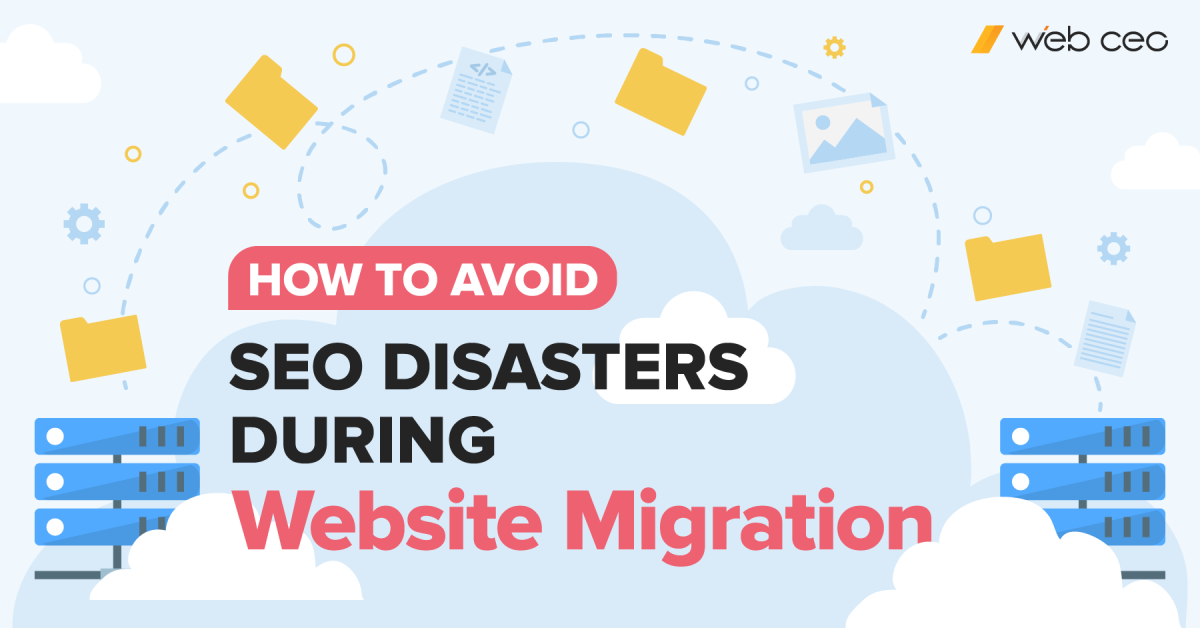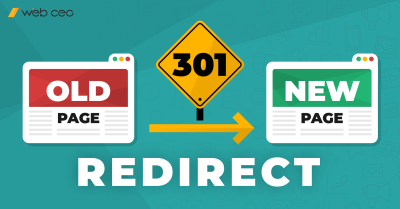
So you’re ready to migrate your website? It’s like moving to a new house – exciting but also a bit nerve-wracking. You may have high hopes about the potential benefits, but you feel uneasy about the possible negative consequences, such as a traffic loss or a hit to your SEO rankings.
Well, fear not! Website migration doesn’t have to be a scary process with careful planning and our guide.
In this article, we’ll guide you through everything you need to know about website migration, from when and why to migrate, to how to do it effectively and avoid critical mistakes. Whether you’re moving to a new domain, updating your website’s technology, or simply switching hosting providers, we’ve got you covered.
So please take a deep breath, grab a cup of coffee, and let’s dive into the exciting world of website migration!
What is Website Migration?
Website migration refers to moving a website from one location to another when you need to change the domain name, switch to a new hosting provider, or update the site’s technology or design.
This process can involve transferring files, databases, and other elements that make up the website and setting up redirects to ensure visitors and search engines can find the new site.
Website migration aims to improve the site’s performance, functionality, or user experience. Still, it is a complex process that requires careful planning and execution to ensure a smooth transition from the old site to the new one. A poorly executed migration can lead to traffic loss, diminished search engine rankings, and a negative impact on the user experience.
However, when done correctly, website migration can provide numerous benefits and opportunities for growth.
Let’s explore what type of website migration we can deal with depending on the reasons for the move and the scope of the changes.
Types of the website migration
- Domain name change: This migration occurs when you change your website’s domain name to rebrand your business, improve your domain authority, or target a different audience.
- Hosting provider switch: You can use this type when you swap hosting providers to improve your site’s uptime, performance, security, and reduce costs.
- CMS platform change: This type of migration occurs when you switch your website’s content management system (CMS) to a different platform, either to gain more features, better customization, or easier maintenance.
- Website redesign: You can use it when you decide to redesign your website’s look and feel, either to update its visual appeal, improve user experience, or align it with your branding strategy.
- HTTPS migration: This type is helpful when you switch your website from HTTP to HTTPS to improve security, comply with regulations, or enhance trust with your visitors.
Preparing for Website Migration
Before you begin any website migration, it’s crucial to make a backup of your current site. Ensure you have a copy of your site’s files and database, which you can use to restore your site if something goes wrong during the migration process.
Many people overlook this step, which can lead to disastrous consequences. It’s common for site owners to forget to back up their site, assuming that the migration process will be straightforward and without issues. However, this is not always the case, and a backup can be a lifesaver in such situations.
To make a backup, you can use various tools and services, including hosting providers, website builders, and backup plugins. Depending on your website’s platform and complexity, you may need different methods or tools to create a full backup.
Determining what to migrate and what not to migrate
After you double-check your backup and recheck it again, you’ll want to determine what to migrate and what not to migrate. This step is critical to ensure you don’t accidentally leave out any essential site elements or migrate unnecessary ones.
To determine what to migrate, you can start by reviewing your site’s content, features, and functionality. Ask yourself what is essential for your site’s success and what can be left behind. Consider your site’s performance and user experience and see if any elements can be optimized or improved during migration.
Here are some examples of what you might want to include in your migration:
- Content: All of your site’s pages, posts, images, videos, and other media.
- Design: Any design elements, such as logos, images, and stylesheets.
- Functionality: Any custom functionality or plugins essential to your site’s operation.
- User data: If you have user accounts or other data stored on your site, you should also migrate this data to the new site.
On the other hand, here are some examples of what you might not want to migrate:
- Outdated or irrelevant content: If your site has old or outdated content that no longer serves a purpose, it may be best to leave it behind.
- Unused plugins or themes: If you have plugins or themes installed on your site that you no longer use or need, do not migrate them to reduce the site’s size and complexity.
- Deprecated functionality: Do not migrate your deprecated or unsupported functionality to avoid compatibility issues with the new site.
Additionally, checking if your old site has any SEO problems before migration is essential. One way to do this is by using the WebCEO Site Audit Tool, which can scan your site and identify any issues that may impact your search engine rankings. Addressing these issues before migration ensures that your new site starts with a strong SEO foundation.
Creating a migration plan
Creating a migration plan helps you stay organized and focused, minimizes downtime, and reduces the risk of losing data.
To create a migration plan, start by outlining the steps to complete the migration successfully. Your plan should include the following elements:
- Timeline: Determine the date you want to migrate your site and establish deadlines for each step in the process. Be realistic and allow enough time for unexpected issues that may arise.
- Resources: Identify the resources needed to complete the migration, including personnel, tools, and services. Ensure that you have everything you need before you start the migration process.
- Communication: Notify your users, customers, and stakeholders of the upcoming migration and inform them about what to expect during the process. Keep them updated on the progress of the migration and notify them when it’s complete.
- Testing: Before launching your new site, conduct thorough testing to ensure everything functions correctly. Test all functionality, including forms, links, and user accounts.
- Rollback Plan: Have a contingency plan (backup) if something goes wrong during the migration. Your rollback plan should include the necessary steps to revert to the old site.
Implementing the Website Migration
Once you’ve completed your planning, it’s time to shine and manage the migration. Here are some general steps you can follow:
Step 1: Set up the new site with the appropriate platform, hosting provider, and domain name. Install any necessary plugins or themes and ensure the site is functional and optimized for search engines.
- Choose a reliable hosting provider with good customer support and the necessary resources for your site’s needs.
- Select a platform that fits your needs, whether WordPress, Joomla, Drupal, or another CMS.
- Ensure your site is optimized for search engines using appropriate metadata, keyword-rich content, and fast page load speeds.
- Use a responsive design that works well on all devices.
Step 2: Move your site’s files to the new site, including your database and other media files. Depending on your platform and hosting provider, you may need to use FTP or a file manager to transfer the files.
- Make a backup of your site before transferring any files.
- Follow the instructions provided by your hosting provider or platform to transfer your site’s files.
- Test the new site’s functionality after the transfer to ensure everything works correctly.
Step 3: Set up redirects to the new site to ensure visitors and search engines can find your new site. Use 301 redirects to redirect all traffic from the old site to the corresponding pages on the new site.
- Create a list of all URLs on the old site and their corresponding URLs on the new site.
- Set up 301 redirects using a plugin or your hosting provider’s control panel.
- Test the redirects to ensure they are working correctly.
Step 4: Test the new site thoroughly to ensure everything works correctly, including all links, images, and other media files. Check optimization for search engines and that all pages load quickly and without errors.
- Use Google’s PageSpeed Insights to check your site’s loading speed and identify areas for improvement.
- Test all forms and interactive elements to ensure they are functioning correctly.
Step 5: Update your DNS settings to point to the new site. This step may take some time to propagate, so be patient and monitor the site carefully during this period.
- Follow the instructions provided by your domain registrar to update your DNS settings.
- Monitor the site closely during migration to ensure everything works correctly.
Step 6: Monitor your traffic and search engine rankings closely after the migration. Use tools like Google Analytics and Google Search Console to track your site’s performance and identify any issues that may arise.
- Use WebCEO’s Rank Tracker Tool to Track All Types of Google Results, including SERP Features. Connect your site with Google Search Console.
- Monitor your site’s performance for several weeks after the migration to ensure everything is okay.
- Use the data provided by the WebCEO tools and Google Search Console to identify any issues and improve your site’s optimization and user experience.
CONCLUSION
In conclusion, website migration is a complex process that requires careful planning and execution to avoid potential negative consequences like a loss of traffic and a hit to SEO rankings. However, with proper preparation and a well-executed plan, website migration can provide many benefits and opportunities for growth, such as improved performance, functionality, user experience, and security.
It’s essential to determine what to migrate and what not to migrate, double-check your backup, and create a detailed migration plan with clear timelines and resources.
Using WebCEO Tools to fix any SEO issues before migration is essential to ensure a strong foundation for your new site.
By following the steps outlined in this article and seeking professional help when needed, you can successfully migrate your website and enjoy the benefits of a fresh start while minimizing any potential negative impact.


